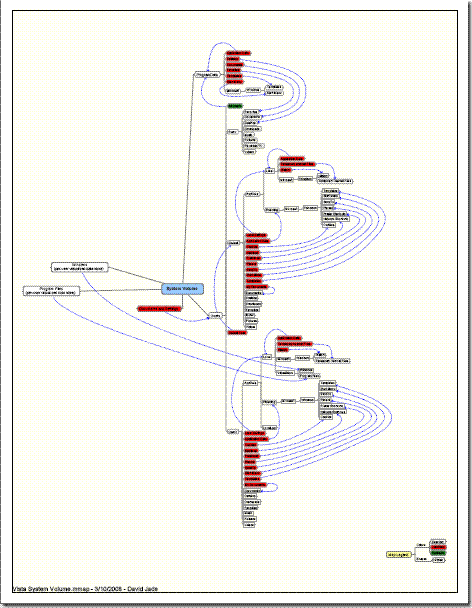With Windows Vista Microsoft has changed where user account profile and program data gets stored. Instead of storing all profile data under "c:\Documents and Settings\" as they did with Windows XP, things are now split between "c:\Users\" and "c:\ProgramData\" (on a standard Vista installation). In order for older programs that hard-coded these directories names (instead of using the proper API to find them) will continue work, Microsoft has used features of the NTFS file system, specially junction points and symbolic links, to create virtual folders that look like the older locations but in reality point to the new locations. This virtualization scheme is pretty complex and for the most part hidden from regular standard users, but as a programmer and system administrator it is sometimes handy to know how these folders have been constructed.
I have created this diagram that maps out these junction points and symbolic links to their physical directories. I have also include information on the virtualized folders that get used when programs attempt to store data in 'c:\Program Files\' or 'c:\Windows\'.

Click to download this diagram as a PDF file